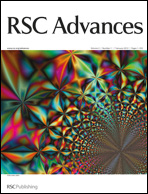The mechanism of metal anodization has been investigated for several decades, however the present models can only partially explain the experimental phenomena. It is known that the total current in the oxide mainly includes ionic current and electronic current. The formation of oxide film is determined by ionic current, and the electronic current gives rise to the evolution of oxygen gas. In this paper, the theoretical expressions for time dependent ionic current and electronic current are derived to deduce the anodizing process. The results indicate that the ionic current decreases exponentially with time, while the electronic current increases with time in a more complicated way. Both types of current will approach infinitely close to a constant value in the steady stage. Consequently, the current evolution under constant anodizing voltage are experimentally investigated for aluminum and titanium anodization. All of the current-transient plots, including that in the formation of both porous and barrier type films, can be well fitted by the proposed expression. The morphology transition between porous and barrier anodic oxide films is determined by the magnitude of electronic current within the oxide.

You have access to this article
 Please wait while we load your content...
Something went wrong. Try again?
Please wait while we load your content...
Something went wrong. Try again?


 Please wait while we load your content...
Please wait while we load your content...